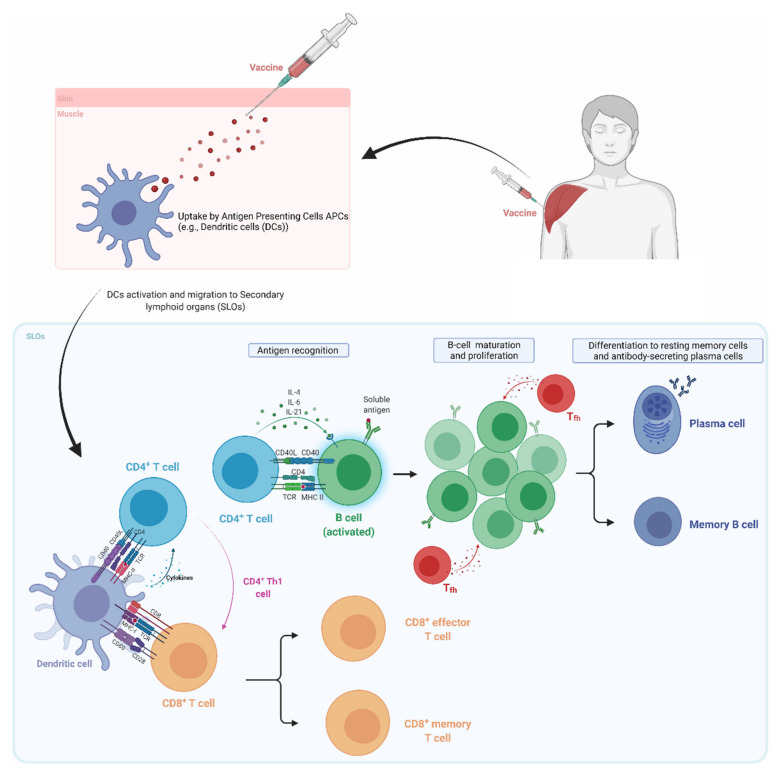Figure 2.
Basics of the immune response to vaccines following intramuscular administration. Vaccine components (e.g., antigen, and/or adjuvant) are recognized and phagocytosed (or uptaken) by tissue resident innate immune cells, or antigen presenting cells (APCs), such as dendritic cells (DCs) and macrophages (Mϕs). The process of antigen and/or adjuvant recognition, phagocytosis, and intracellular processing of antigens induce APCs to mature (e.g., increased expression of clusters of differentiation (CDs) such as CD80, CD40, MHC…), and migrate to secondary lymphoid organs (SLO; e.g., draining lymph nodes (dLN), and the spleen). Incoming APCs encounter and interact with T lymphocytes through molecular recognition between the APCs major histocompatibility complex (MHC) and the T cell receptor (TCR); also known as signal 1. This interaction is stabilized through an additional set of interactions between receptors, or co-receptors, on both cell types (i.e., CD40-CD40L); also known as signal 2. Interaction between MHC-II and the TCR, co-receptors, and APC secreted cytokines (also known as signal 3) induces the activation of helper T cells (Th or CD4+ T cells). In some cases, antigens may be cross-presented on class I MHC in addition to the canonical class II MHC presentation. The former interacts with the TCR of CD8+ T cells, leading to their differentiation into effector (cytotoxic) T cells and memory CD8+ T cells. CD4+ T cells differentiate into one of the subclasses (e.g., Th2, Tfh, Th17, Th9…).

